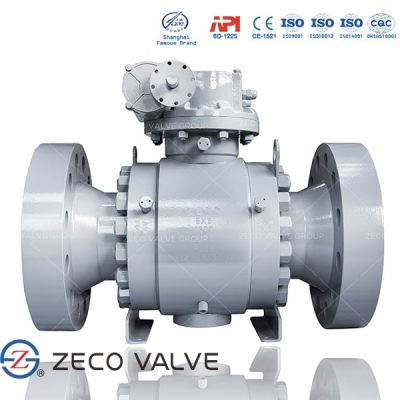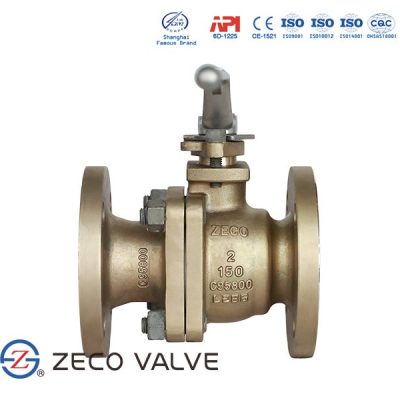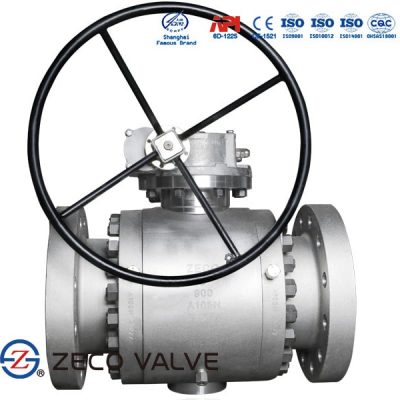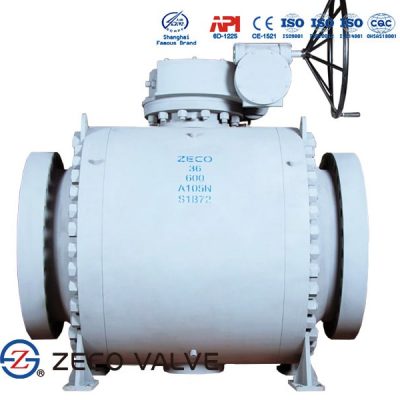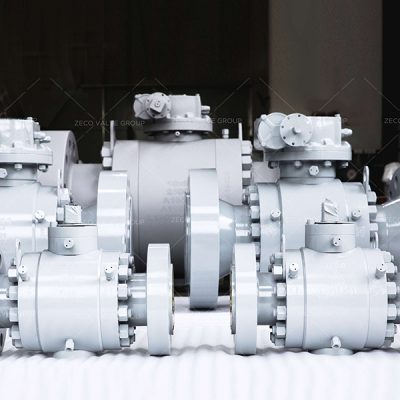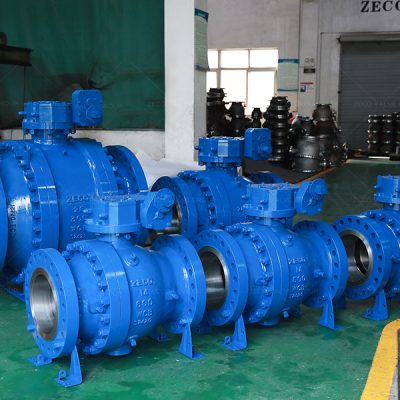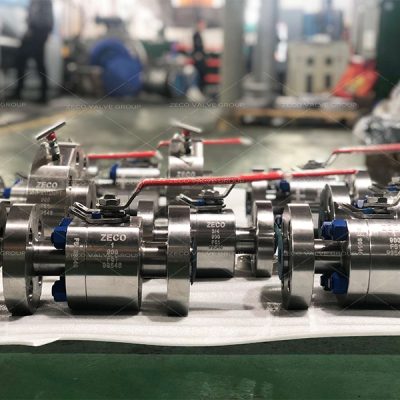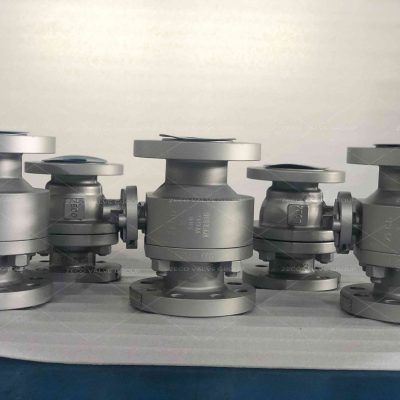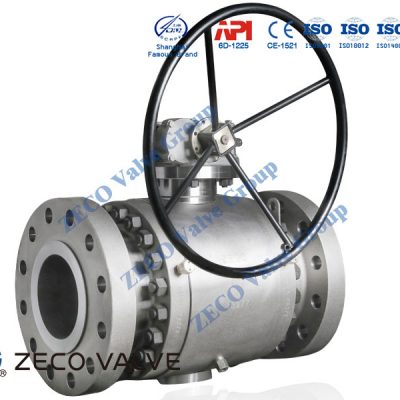What are Applicable Design Standards?
API American Petroleum Institute
- 6D Specification for Pipeline Valves
- 598 Valve Inspection and Test
- 607 Fire test for Soft Seated Quarter Turn Valves
- 608 Metal Ball Valves
ASME American Society of Mechanic Engineers
- B16.5 Steel Pipe Flanges and Flanged Fittings
- B16.10 Face to Face and End to End Dimensions of Ferrous Valves
- B16.34 Steel Valves—Flanged and Butt Welding Ends
- N31.4 Liquid Petroleum Transportation Piping Systems
- B31.8 Gas Transmission and Distribution Piping Systems
ISO International Organization for Standardization
- ISO 9001-2000 Quality Systems for Design/Development, Production, Installation, Servicing
- ISO 5211 Top works for Mounting Dimensions
BS British Standard
- BS 5351 Steel Ball Valves for the Petroleum, Petrochemical, and Allied Industries
MSS Manufacturers Standardization Society
- SP 25 Standard Marking System for Valves, Fittings, Flanges and Unions
- SP 45 Bypass and Drain Connection Standard
NACE National Association of Corrosion Engineers
- MR0175 Sulfide Stress Cracking Resistant Metallic Materials for Oilfield Equipment
What is API 6D Ball Valve?
API 6D ball valves are designed and manufactured to provide maximum service life and dependability. All ball valves are full port or reduced port and meet the design requirements of API 6D. API 6D ball valves are available in a complete range of body/bonnet materials and trims. API 6D ball valves are available for the pressure ratings only: Class 150, Class 300, Class 400, Class 600, Class 900, Class 1500, and Class 2500.
| Design and Manufacture | API 6D |
| Wall Thickness | API 6D |
| Face-to-Face Dimension | API 6D |
| Flange End Dimension | ANSI/ASME B16.5 (1” to 24”) ANSI/ASME B16.47 (26” & up) |
| Butt-Weld End Dimension | ANSI/ASME B16.25 |
| Inspection & Testing | API 6D/API 598 |
| Fire Safe Design | API 607/BS 6755 |
| Material | Nace MR 0175 |
API 6D Ball Valve Face to Face Dimensions (RTJ Ends)
| NPS (Inch) | DN (mm) | Class150 | Class 300 | Class 400 | Class 600 |
| 2” | 50 | 191 | 232 | – | 295 |
| 2-1/2” | 65 | 203 | 257 | – | 333 |
| 3” | 80 | 216 | 298 | – | 359 |
| 4” | 100 | 241 | 321 | 410 | 435 |
| 6” | 150 | 406 | 419 | 498 | 562 |
| 8” | 200 | 470 | 518 | 600 | 664 |
| 10” | 250 | 546 | 584 | 676 | 791 |
| 12” | 300 | 622 | 664 | 765 | 841 |
| 14” | 350 | 699 | 778 | 829 | 892 |
| 16” | 400 | 854 | 905 | 994 | 854 |
| 18” | 450 | 930 | 981 | 1095 | 930 |
| 20” | 500 | 1010 | 1060 | 1200 | 1010 |
| 22” | 550 | 1114 | 1153 | 1305 | 1114 |
| 24” | 600 | 1165 | 1241 | 1407 | 1165 |
| 26” | 650 | 1270 | 1321 | 1461 | 1270 |
| 28” | 700 | 1372 | 1410 | 1562 | 1372 |
| 30” | 750 | 1422 | 1537 | 1664 | 1422 |
| 32” | 800 | 1553 | 1667 | 1794 | 1553 |
| 34” | 850 | 1654 | 1794 | 1946 | 1654 |
| 36” | 900 | 1756 | 1895 | 2099 | 1756 |
| NPS (Inch) | DN (mm) | Class 900 | Class1500 | Class 2500 |
| 2” | 50 | 371 | 371 | 454 |
| 2-1/2” | 65 | 422 | 422 | 514 |
| 3” | 80 | 384 | 473 | 584 |
| 4” | 100 | 460 | 549 | 683 |
| 6” | 150 | 613 | 711 | 927 |
| 8” | 200 | 740 | 841 | 1038 |
| 10” | 250 | 841 | 1000 | 1292 |
| 12” | 300 | 968 | 1146 | 1445 |
| 14” | 350 | 1038 | 1276 | – |
| 16” | 400 | 1140 | 1407 | – |
| 18” | 450 | 1232 | 1559 | – |
| 20” | 500 | 1334 | 1686 | – |
| 22” | 550 | – | – | – |
| 24” | 600 | 1568 | 1972 | – |
| 26” | 650 | 1673 | – | – |
| 28” | 700 | – | – | – |
| 30” | 750 | 1902 | – | – |
| 32” | 800 | – | – | – |
| 34” | 850 | – | – | – |
| 36” | 900 | 2315 | – | – |
Types of API 6D Ball Valves
API 6D Floating Ball Valve
ZECO Valve offers 2”-8 6D cast floating ball valves built to meet the industry’s strictest specifications. Our products include ANSI Classes 150-1500, material grade WCB cast carbon steel
6D FLOATING BALL VALVES for application in pipeline and piping systems for the Petroleum and Oil & Gas Industry.
| SIZE RANGE | 2” –8″ |
| PRESSURE RANGE | 150 ANSI pressure class to 2500 ANSI pressure class |
| PORT SIZES | Two-piece full port design, Two-piece reduced port design |
| MATERIAL GRADES | WCB, WC6, WC9, A105N, LF2, F316, F51, F91 |
| STANDARD SEAT MATERIAL | PTFE, RPTFE, DEVLON, PEEK, NYLON |
| PACKING AND GASKET MATERIAL | Graphite, PTFE |
| END CONFIGURATIONS | Raised Face, RTJ, SW, BW, FF |
| STANDARDS | Fire Safe, CE Certified, NACE Certified, API 608, API 6D |
API 6D Trunnion Ball Valve
Trunnion design ball valves incorporate the use of upper and lower supports to retain the ball under pressure. API 6D trunnion ball valves have a secondary sealant injection system for stem seals and seats in the event of providing a temporary seal to an otherwise damaged area. The trunnion ball valve design using the upper and lower trunnion plate system essentially doubles the safety and reliability of a standard trunnion ball valve.
Trunnion plate system feature is standard on all API 6D trunnion ball valves from 2” and up (ANSI 600 through 2500). It permits the valve to be installed in either direction, since the trunnion prevents the ball from shifting — or worse, blowing out – under high-pressure applications.
Another important benefit of the trunnion plate system design is that it allows the ball to only rotate a quarter turn with no hysteresis thus more control and reliability under extreme applications.
API 6D trunnion ball valves use materials in accordance with NACE MR0175/ISO15156. In order to ensure compliance customers must provide application-specific operating conditions.
Features of API 6D Trunnion Ball Valve
- Valves designed according to API 6D
- All sizes available as full-or reduced bore
- Double block-bleed on request
- Fire safe to BS 6755, API 6FA, and API 607
- Valve seats as single or double piston type
- Elastomeric and thermoplastic sealing materials to suit the application
- Can be delivered with any type of actuator & accessories
- Secondary sealing by grease injection
- All sizes and classes available with metal-metal sealing
- Fully welded upon request
- Antistatic device and anti-blow-out stem
- Special executions for cryogenic or high temp service
Applications of API 6D Trunnion Ball Valve
These valves are suitable for demanding and critical applications in oil&gas, petrochemical, and chemical industries. With the wide range of special valve materials available, the valves find frequent use off-shore and in similar applications where physical and chemical resistance to both flow medium and environment is of utmost importance.
Valves can be engineered to suit any particular client requirement.

